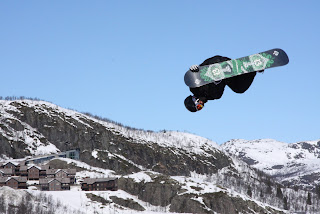For this weeks blog I found a quiz: Which famous photographer are you? The quiz consisted of seven simply questions. To finish it took only a few seconds. By taking this quiz I could find out which famous photographer`s style fits me the best. Right after I got my answer I had know idea who the famous photgrapher was, The description for him and me as a photgrapher in the quiz was: "We are passive onlookers in a world that moves perpetually. Our only moment of creation is that 1/125th of a second when the shutter clicks, the signal is given, and the motion is stopped...". It might be true about me, I don't really know.. The famous photographer I got was Henri Cartier-Bresson. I decided to make some research about him.
Henri Cartier-Bresson was born 1908 in Chanteloupe, France. Since he was a little boy he has been taking snap-shots, which he started taking at holidays. He elevated "snap shooting" to a higher level of art. He had an uncandid ability as a photographer to capture people in their "decisive moment", as a former art student, he developed the subtle and sensitive eye for composition, this and his self-effacingmethods of work among his thoughts of photography made him legendary as a photographer among contemporary photojournalists.
Henri Cartier-Bresson
Above are two of Henri's photographs, both of which I found intriguing. I really like black and white photos, especially natural ones. I think that the black and white add a certain feeling to photos, a time change and realism. I don't think that I take the same kind of photos as Cartier-Bresson, but I really like this kind of photos and would like to get better at taking pictures similiar to his, but in my way..
Here you can read more about Henri Cartier-Bresson in a brief biography.








